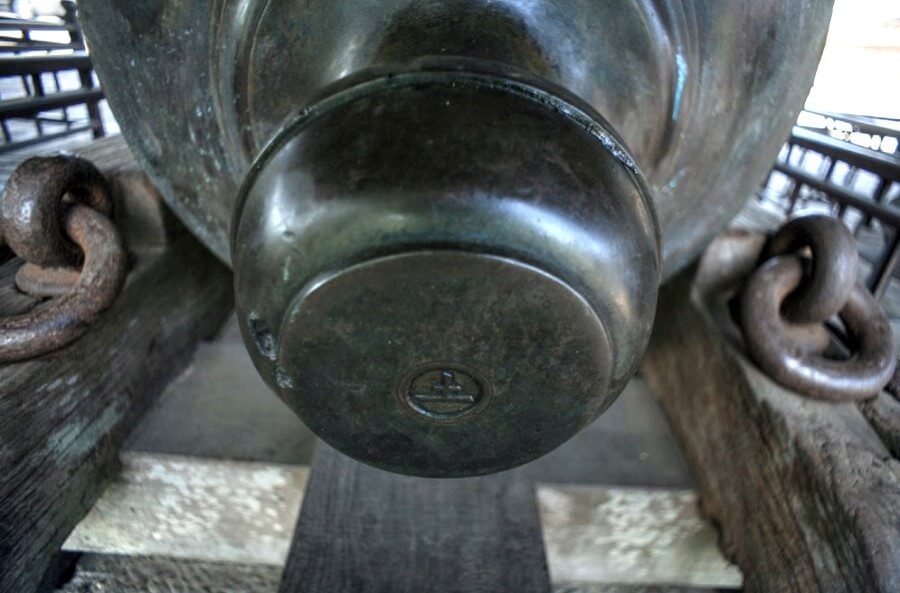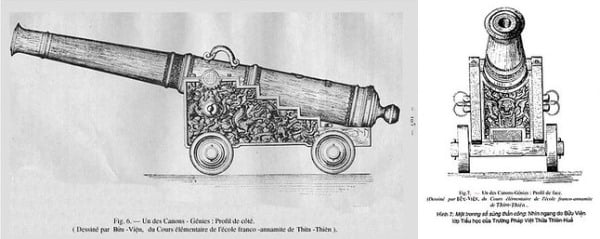The nine cannons are divided into two groups: the "Four Seasons" group including 4 cannons of Spring - Summer - Autumn - East and the "Five Elements" group including 5 cannons of Metal - Wood - Water - Fire - Earth. Previously, the Nine Holy Cannons were placed in front of Ngo Gate - the main door of the Imperial Citadel, in two rows of cannon workshops; now they are located at The Nhon Gate (Ngan Gate) and Quang Duc Gate (Sap Gate) of Hue Citadel.

Name and rank of the cannon
Each cannon has a length of 5,1m with an inner diameter of 22,5cm; On the body, there are many exquisite decorative patterns and short texts about the history of the cannon. The cannon's knob has the name and rank of each cannon, as Xuan (Spring) is known as "the first of the Nine Holy Cannons"... There is an inscription on the carriage about how to make suppositories.

Painted in the journal “Bulletin des Amis du Vieux Hué” (Friends of Hue Ancient Capital) No. 2 Avril-Juin 1914. Translation by Thuan Hoa Publishing House. (Photo by Manhhai, Flickr, CC BY 2.0)
The nine guns were all very large in size and weight, with an average of 11.000kg each. Each gun is mounted on an elaborately carved wooden carriage. The two sides of the carriage have 4 wooden wheels bordered with iron for convenient movement. The cannon's body is engraved with text and decorative patterns.
In addition to the cannon's name, dating to the third year of Gia Long (1804), the cannon's body is also engraved with the weight of each gun by weight unit (the heaviest gun weighs 18,400 kg, the lightest gun weighs 17,200 kg). Symmetrically for each weight mark on each gun, there is also a short article stating the reason for casting the gun, and how to make ammunition. In 1816, Emperor Gia Long gave all nine cannons the title "Than Oai Vo Dich Thuong Tuong Quan", which means “The nine undefeated holy cannons”. This title and the content of the ordination are engraved on all 9 cannons.

In addition, there are patterns decorated with flowers and leaves and there are two large straps in the shape of two very sophisticated qiling. On the cannons are also engraved the names of the people who instruct the construction of these guns, including Marshal Nguyen Van Khiem, Captain Hoang Van Can, Captain Cai Van Hieu and Assessor of Public Works Ministry Phan Tien Can.